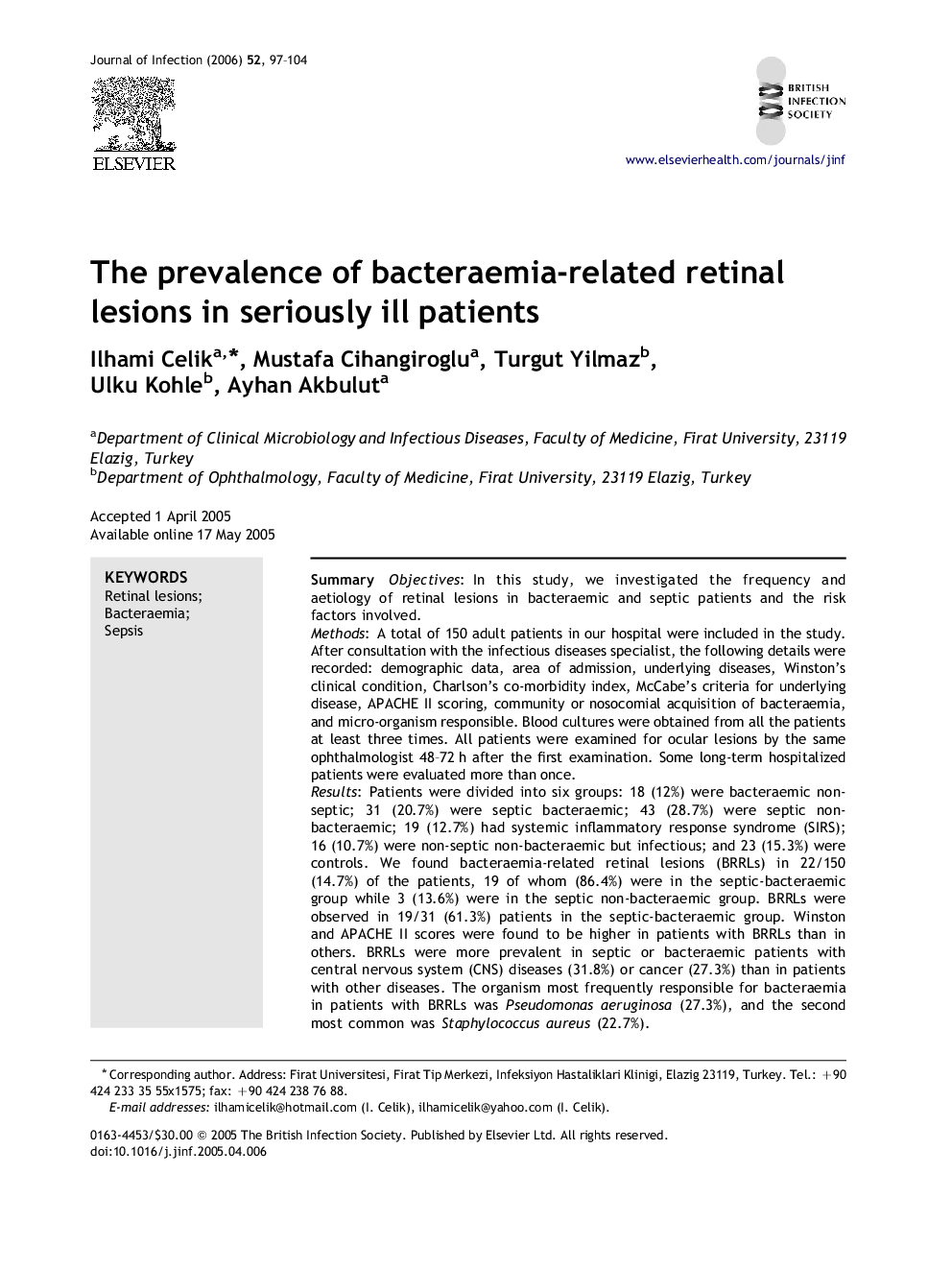| کد مقاله | کد نشریه | سال انتشار | مقاله انگلیسی | نسخه تمام متن |
|---|---|---|---|---|
| 3376118 | 1219709 | 2006 | 8 صفحه PDF | دانلود رایگان |

SummaryObjectivesIn this study, we investigated the frequency and aetiology of retinal lesions in bacteraemic and septic patients and the risk factors involved.MethodsA total of 150 adult patients in our hospital were included in the study. After consultation with the infectious diseases specialist, the following details were recorded: demographic data, area of admission, underlying diseases, Winston's clinical condition, Charlson's co-morbidity index, McCabe's criteria for underlying disease, APACHE II scoring, community or nosocomial acquisition of bacteraemia, and micro-organism responsible. Blood cultures were obtained from all the patients at least three times. All patients were examined for ocular lesions by the same ophthalmologist 48–72 h after the first examination. Some long-term hospitalized patients were evaluated more than once.ResultsPatients were divided into six groups: 18 (12%) were bacteraemic non-septic; 31 (20.7%) were septic bacteraemic; 43 (28.7%) were septic non-bacteraemic; 19 (12.7%) had systemic inflammatory response syndrome (SIRS); 16 (10.7%) were non-septic non-bacteraemic but infectious; and 23 (15.3%) were controls. We found bacteraemia-related retinal lesions (BRRLs) in 22/150 (14.7%) of the patients, 19 of whom (86.4%) were in the septic-bacteraemic group while 3 (13.6%) were in the septic non-bacteraemic group. BRRLs were observed in 19/31 (61.3%) patients in the septic-bacteraemic group. Winston and APACHE II scores were found to be higher in patients with BRRLs than in others. BRRLs were more prevalent in septic or bacteraemic patients with central nervous system (CNS) diseases (31.8%) or cancer (27.3%) than in patients with other diseases. The organism most frequently responsible for bacteraemia in patients with BRRLs was Pseudomonas aeruginosa (27.3%), and the second most common was Staphylococcus aureus (22.7%).ConclusionBRRLs are most frequent in bacteraemic-septic patients (61.3%). The underlying diseases predisposing most to BRRLs are diseases of the CNS and cancers. Ocular examination appears to be a useful aid to diagnosis of bacteraemia or sepsis.
Journal: Journal of Infection - Volume 52, Issue 2, February 2006, Pages 97–104